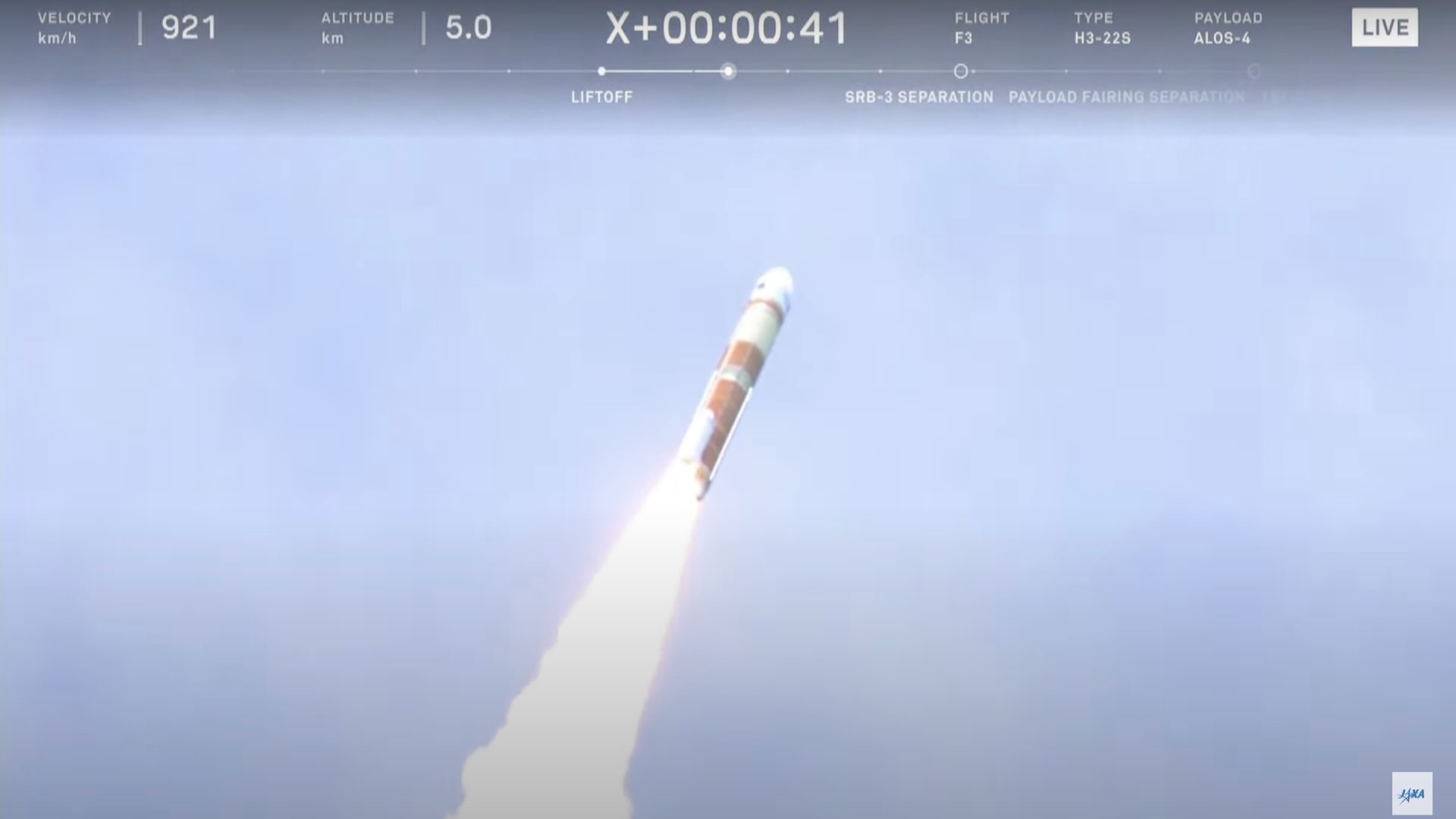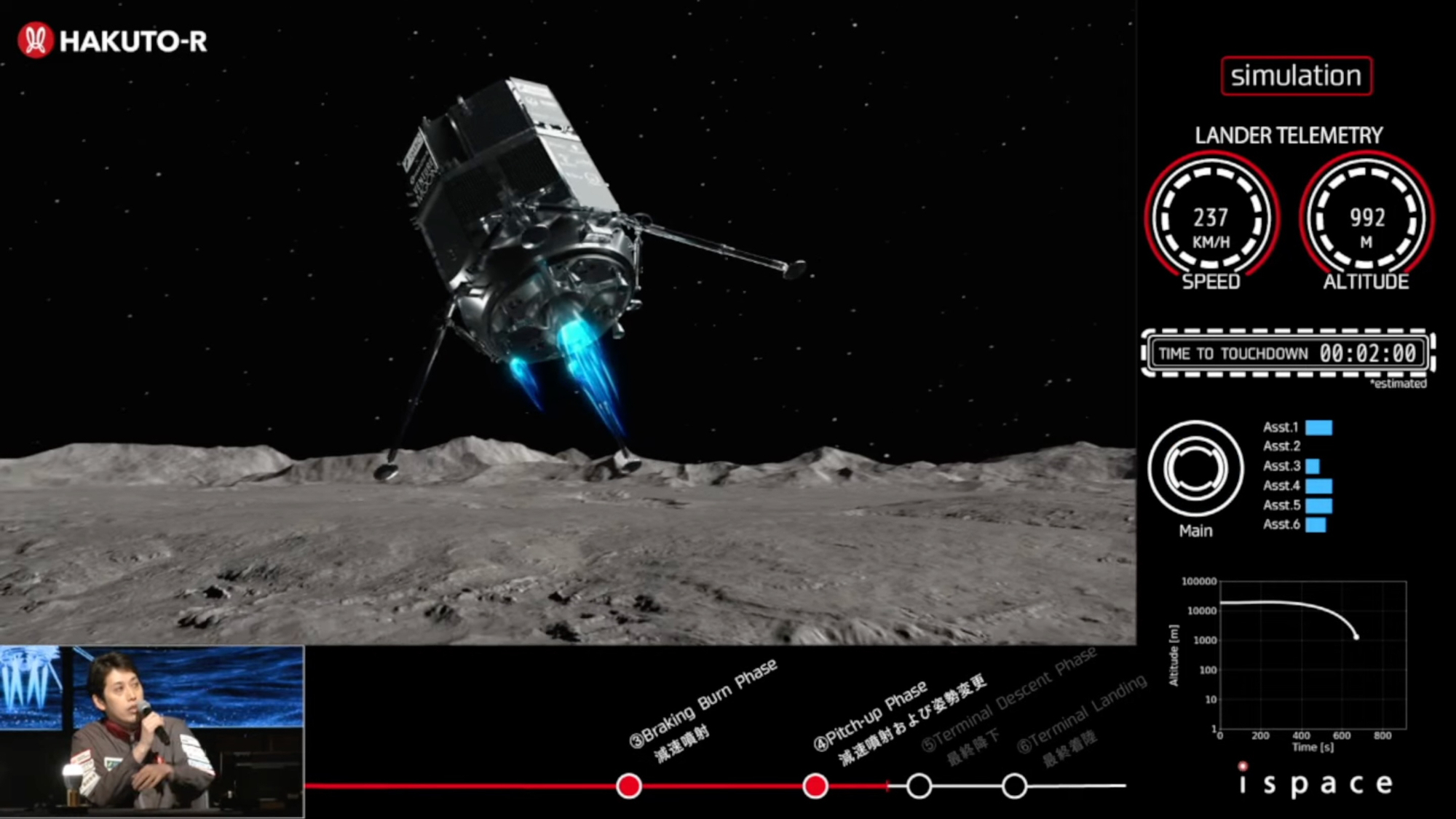Japan's new H3 rocket flew for the third time ever tonight (June 30).
The H3 launched the Advanced Land Observing Satellite-4 (ALOS-4; also known as DAICHI-4) from Japan's Tanegashima Space Center tonight, rising off the pad at 11:06 p.m. EDT (0306 GMT and 12:06 p.m. Japan Standard Time on July 1).
ALOS-4 was deployed into low Earth orbit as planned about 16 minutes after liftoff, commentators said on the webcast provided by the Japan Aerospace Exploration Agency (JAXA).

The two-stage H3 was developed by JAXA and Mitsubishi Heavy Industries. It's envisioned to be Japan's workhorse medium-lift rocket, taking those reins from the H-2A, which is set to retire later this year after more than 20 years of service.
Related: Japan's new H3 rocket fails on 1st test flight, advanced Earth observation satellite lost
The H3's path to orbit was a bit bumpy, however. The new rocket was originally supposed to launch for the first time in 2020, but difficulties in engine development and other issues pushed that debut back to March 2023.
And that initial liftoff didn't go well: The H3's upper-stage engine failed to ignite, and the rocket's payload — the Advanced Land Observing Satellite-3 (ALOS-3, or DAICHI-3) — was lost.
Get the Space.com Newsletter
Breaking space news, the latest updates on rocket launches, skywatching events and more!
The H3 bounced back on its second flight, which occurred in February of this year and carried a 5,900-pound (2,600 kilograms) mass simulator as its main payload. The rocket reached orbit successfully and also deployed two small Earth-observation satellites, called CE-SAT-IE and TIRSAT, that were along for the ride.
The 3-ton ALOS-4 is an advanced successor to Japan's ALOS-2 satellite, which has been studying Earth using synthetic aperture radar since its 2014 launch.
"JAXA and its prime contractor, Mitsubishi Electric Corporation, are developing the satellite aiming at achieving both high resolution and a broader observation swath," JAXA officials wrote in an ALOS-4 mission description.
"Unlike observations by an optical sensor, radar images can be acquired day and night as it does not require sunlight," the agency added. "Moreover, since radio waves can penetrate cloud, the images can be obtained regardless of weather condition. The ALOS-4 will leverage these merits for observing and monitoring disaster-hit areas, forests and sea ice."
Join our Space Forums to keep talking space on the latest missions, night sky and more! And if you have a news tip, correction or comment, let us know at: community@space.com.

Michael Wall is a Senior Space Writer with Space.com and joined the team in 2010. He primarily covers exoplanets, spaceflight and military space, but has been known to dabble in the space art beat. His book about the search for alien life, "Out There," was published on Nov. 13, 2018. Before becoming a science writer, Michael worked as a herpetologist and wildlife biologist. He has a Ph.D. in evolutionary biology from the University of Sydney, Australia, a bachelor's degree from the University of Arizona, and a graduate certificate in science writing from the University of California, Santa Cruz. To find out what his latest project is, you can follow Michael on Twitter.
